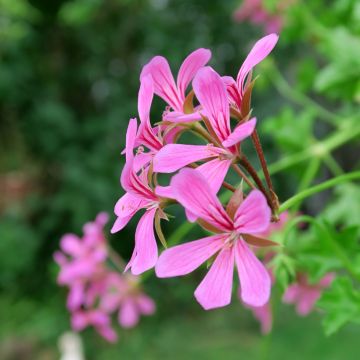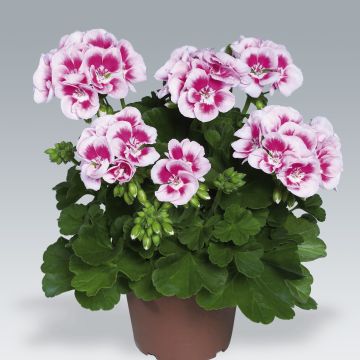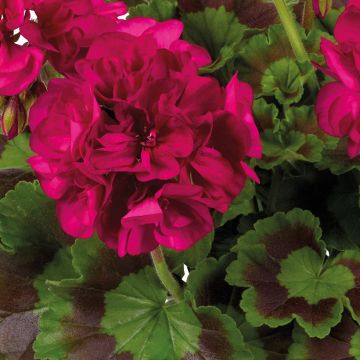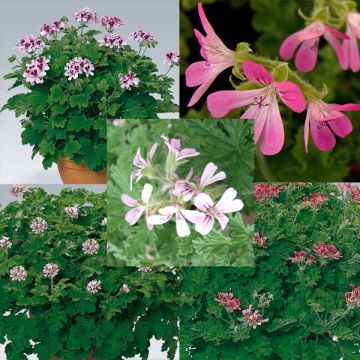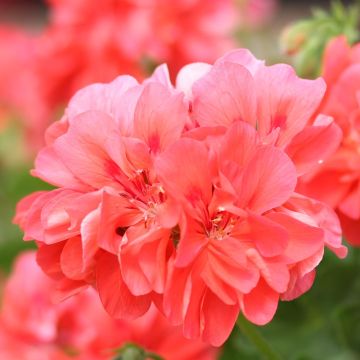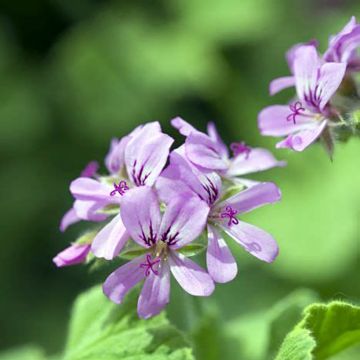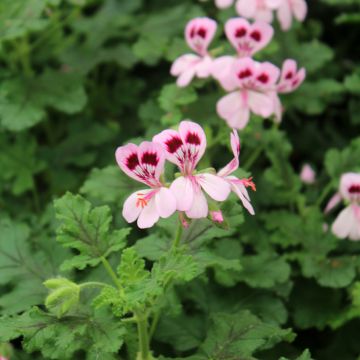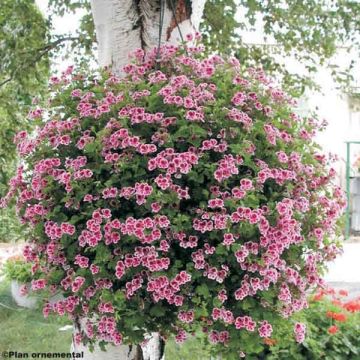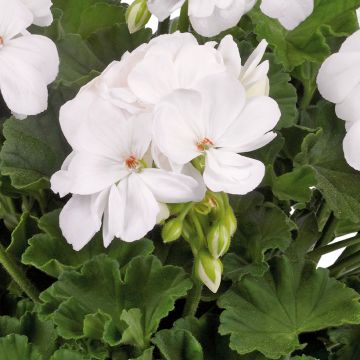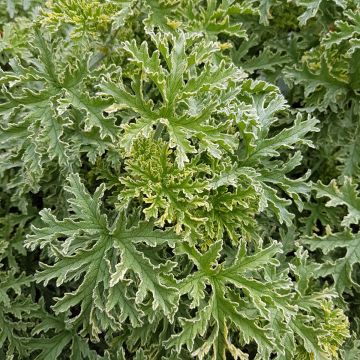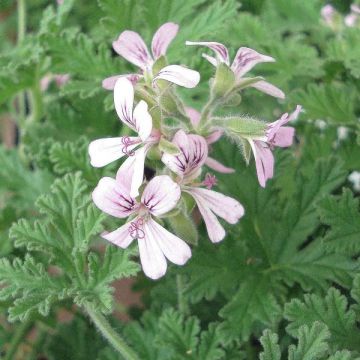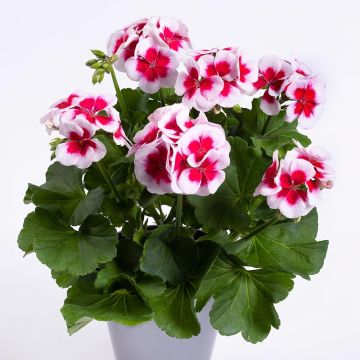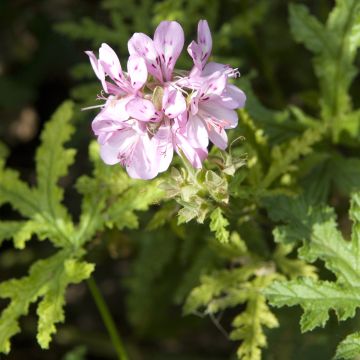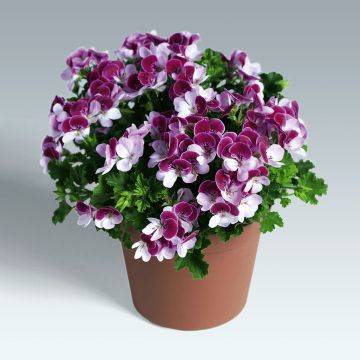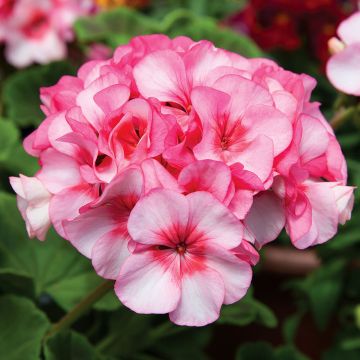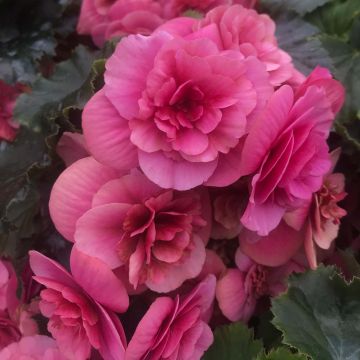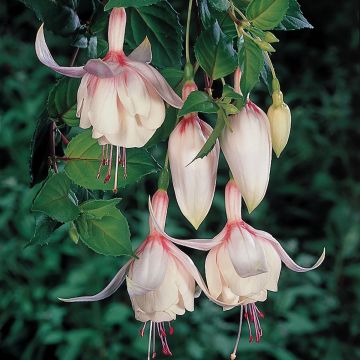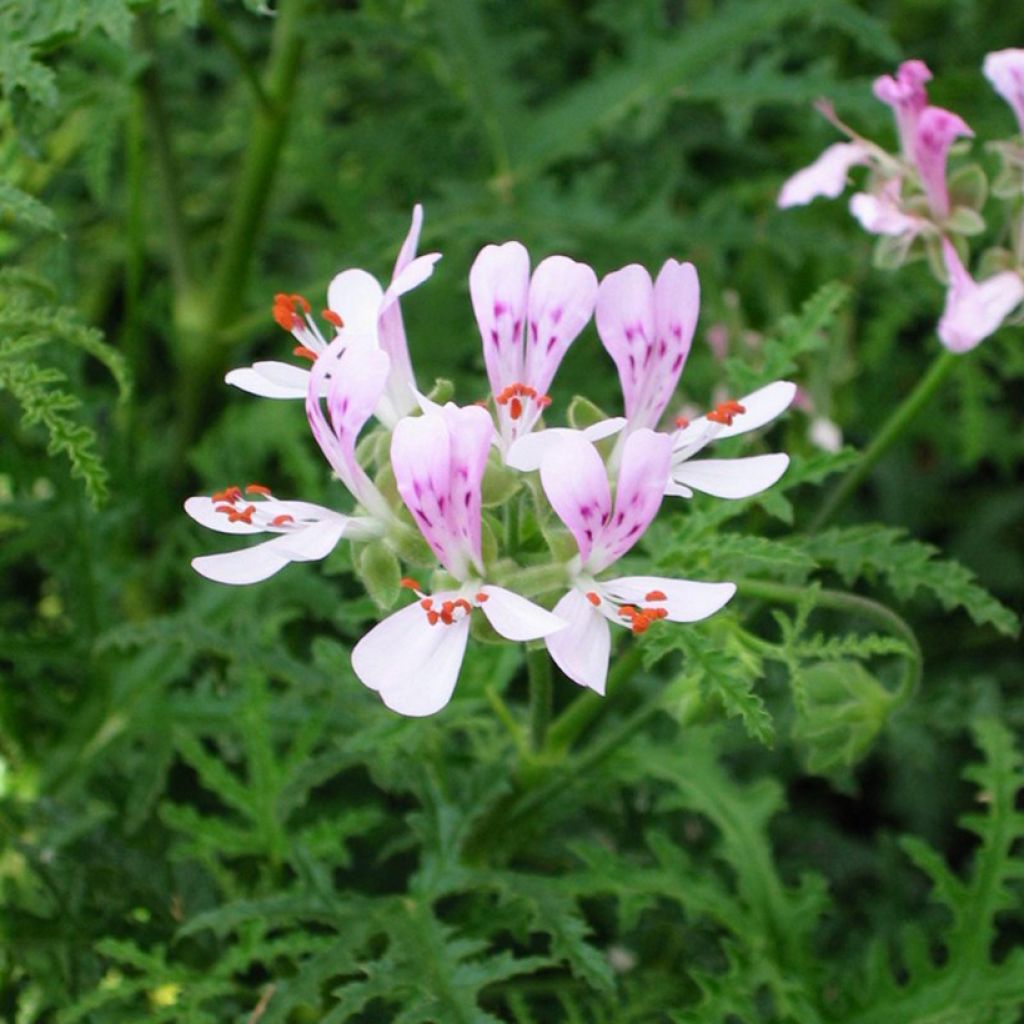

Pelargonium crispum Candy Dancer
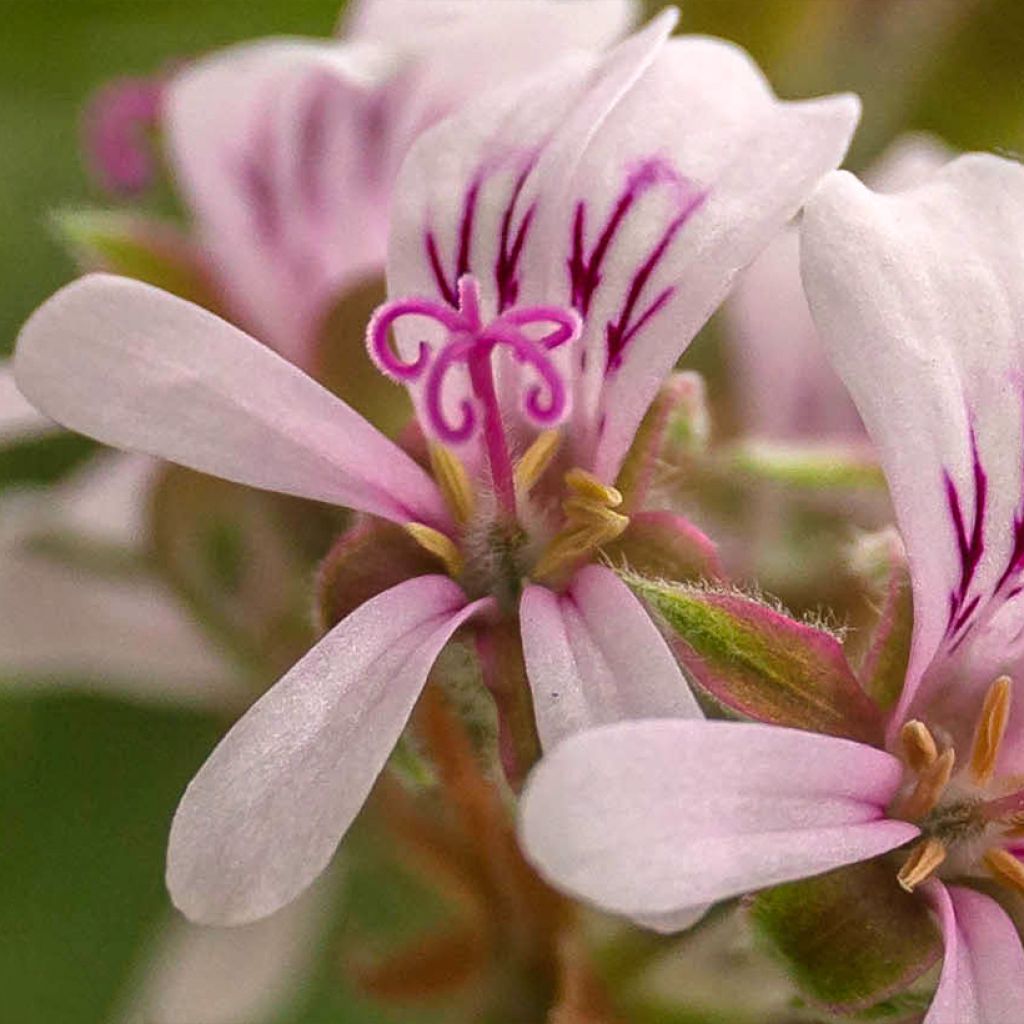

Pelargonium crispum Candy Dancer
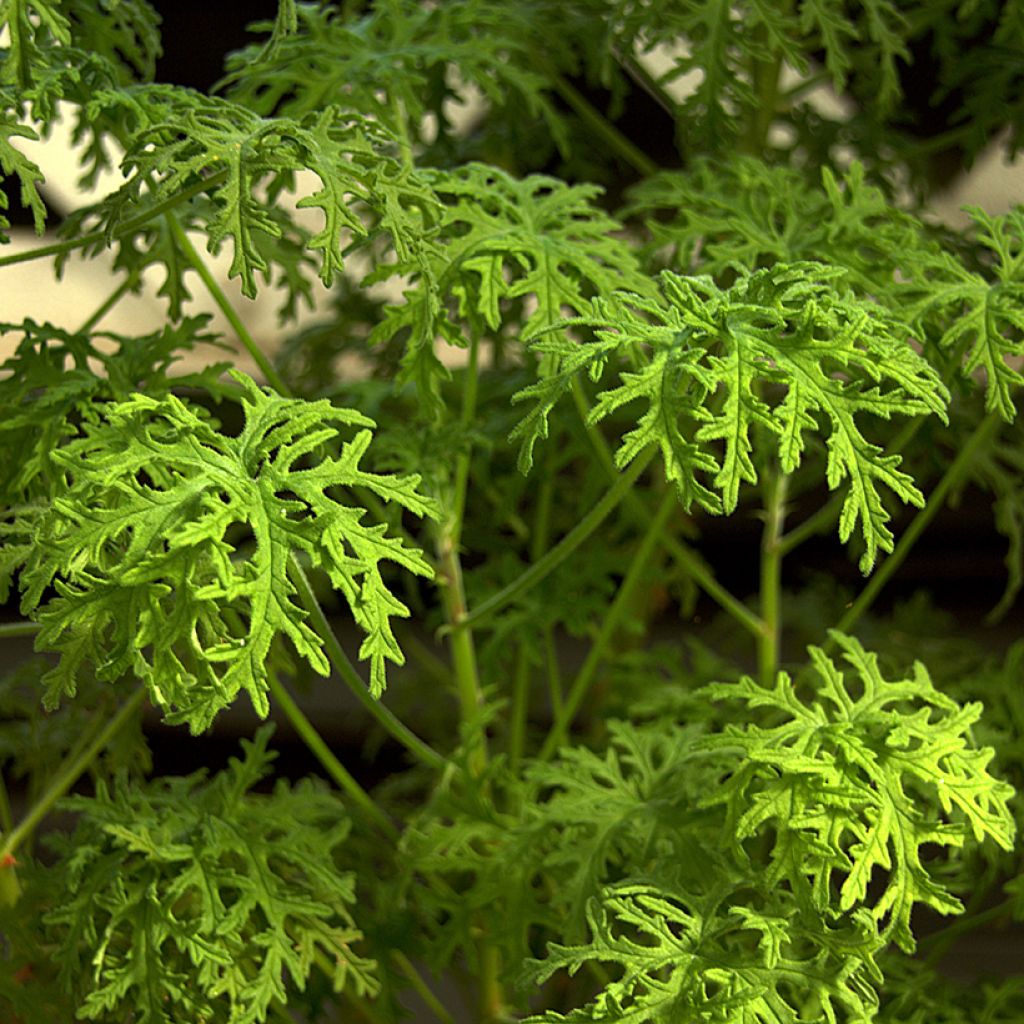

Pelargonium crispum Candy Dancer
Pelargonium crispum Candy Dancer
Pelargonium x crispum Candy Dancer
Geranium, Storksbill
Why not try an alternative variety in stock?
View all →This plant carries a 6 months recovery warranty
More information
We guarantee the quality of our plants for a full growing cycle, and will replace at our expense any plant that fails to recover under normal climatic and planting conditions.
From €5.90 for pickup delivery and €6.90 for home delivery
Express home delivery from €8.90.
Delivery to Corse prohibited: UE law prohibits the import of this plant from mainland France to Corse as part of the fight against Xylella fastidiosa. Please accept our sincere apologies.
More information
Does this plant fit my garden?
Set up your Plantfit profile →
Description
The Pelargonium 'Candy Dancer' is a very pretty plant that resembles a fern, with small, finely cut, bright green leaves that give off a pleasant scent of lemony rose. Its flowering is not spectacular but prolonged, and its small lavender-pink flowers gathered in graceful clusters are charming. Highly appreciated, both as an annual for flower beds and as a patio plant, this variety is undoubtedly a safe choice!
The Pelargonium 'Candy Dancer' is a horticultural hybrid from two botanical species native to South Africa called Pelargonium crispum and P. graveolens. This 'Candy Dancer' selection forms an upright and slightly arching bush, about 60-70 cm (24-28in) tall and 40-50 cm (16-20in) wide. Its pubescent and fragrant stems bear clusters of small lavender-pink flowers veined with magenta, light, perhaps less spectacular than those of classic hybrids, whether perennial or annual, but more authentic. These flowers are quite inconspicuous, sometimes nestled in the foliage. They bloom intermittently between May and September. The foliage of this variety is abundant and finely textured. The hairy, light green leaves are highly fragrant and divided into several thin segments with dentate edges. With a simple touch, they release a delicate scent halfway between rose and lemongrass.
The Pelargonium 'Candy Dancer' is as delightful to look at as it is pleasant to smell and touch. So plant it in a pot or the ground, in a place where you can... feast on it, along the edge of a path or in a large pot or a patio near a staircase, never too far from the house, or even inside the house, in a moderately heated room in winter. One day after the rain, we were captivated by a bed of fragrant geraniums and spent a long time immersing ourselves in a small symphony of delicate scents. It is a plant that can become exuberant in very mild climates and requires very little maintenance, making it valuable for coastal gardens.
The leaves of the fragrant pelargonium are commonly used in the production of rose essence for perfumes, and in England, the flowers are harvested for use in jelly flavouring. You can also try using the fragrant pelargonium flower to add flavour to your recipes, and the edible leaves can be used in fruit salads or potpourri.
Report an error about the product description
Pelargonium crispum Candy Dancer in pictures
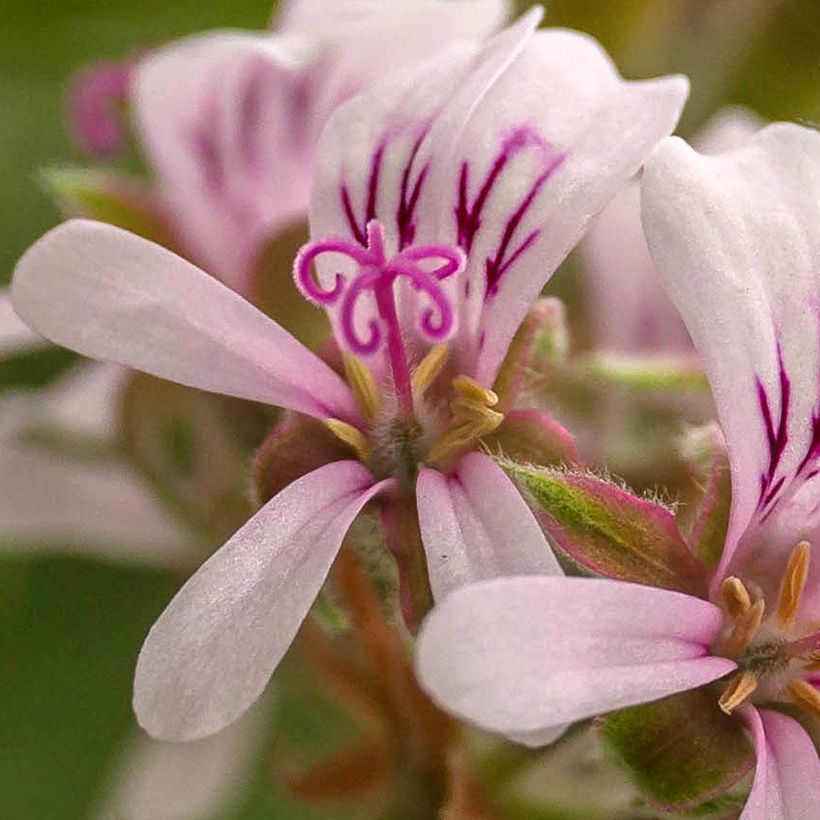

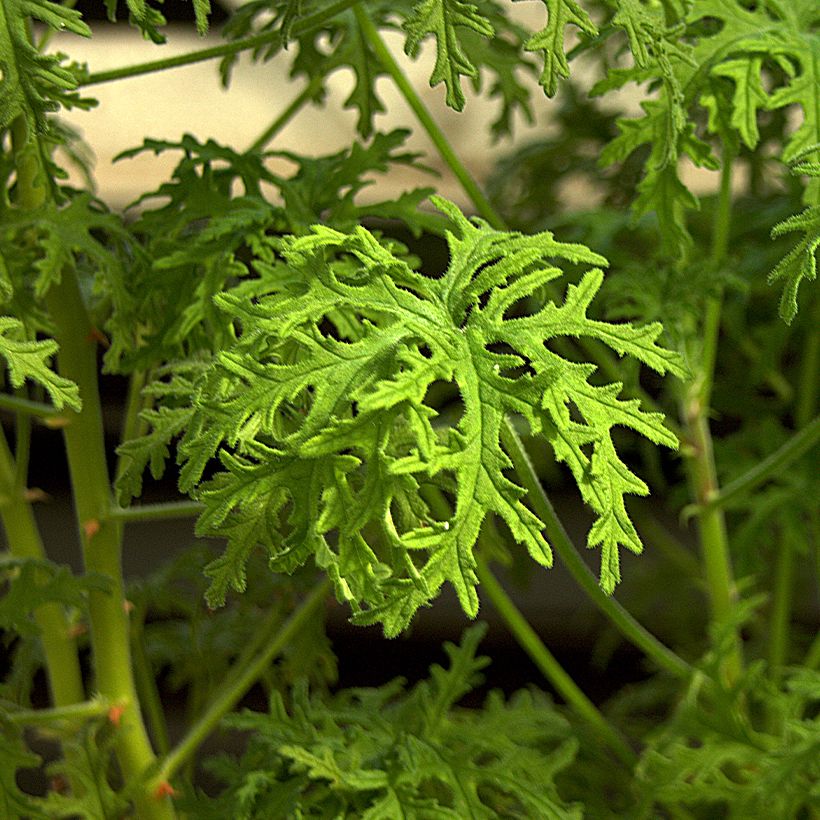

Flowering
Foliage
Plant habit
Botanical data
Pelargonium
x crispum
Candy Dancer
Geraniaceae
Geranium, Storksbill
Cultivar or hybrid
Other Pelargonium - Geranium
Planting and care
Plant your Candy Dancer young plant in open ground after the last frost, in a sunny habit. You can also plant it in a pot in a sheltered bristle, which you will take out in May. If you plant them in open ground, wait until the frost has passed. Fragrant geraniums require well-drained soil but are not necessarily very rich. Water moderately. In a pot, regular watering is necessary in summer. You can keep your geraniums indoors under a veranda or in a cold greenhouse in winter. They can tolerate a slight frost but will not survive the winter in the garden.
Planting period
Intended location
Care
This item has not been reviewed yet - be the first to leave a review about it.
Plug plants - Annuals
Haven't found what you were looking for?
Hardiness is the lowest winter temperature a plant can endure without suffering serious damage or even dying. However, hardiness is affected by location (a sheltered area, such as a patio), protection (winter cover) and soil type (hardiness is improved by well-drained soil).

Photo Sharing Terms & Conditions
In order to encourage gardeners to interact and share their experiences, Promesse de fleurs offers various media enabling content to be uploaded onto its Site - in particular via the ‘Photo sharing’ module.
The User agrees to refrain from:
- Posting any content that is illegal, prejudicial, insulting, racist, inciteful to hatred, revisionist, contrary to public decency, that infringes on privacy or on the privacy rights of third parties, in particular the publicity rights of persons and goods, intellectual property rights, or the right to privacy.
- Submitting content on behalf of a third party;
- Impersonate the identity of a third party and/or publish any personal information about a third party;
In general, the User undertakes to refrain from any unethical behaviour.
All Content (in particular text, comments, files, images, photos, videos, creative works, etc.), which may be subject to property or intellectual property rights, image or other private rights, shall remain the property of the User, subject to the limited rights granted by the terms of the licence granted by Promesse de fleurs as stated below. Users are at liberty to publish or not to publish such Content on the Site, notably via the ‘Photo Sharing’ facility, and accept that this Content shall be made public and freely accessible, notably on the Internet.
Users further acknowledge, undertake to have ,and guarantee that they hold all necessary rights and permissions to publish such material on the Site, in particular with regard to the legislation in force pertaining to any privacy, property, intellectual property, image, or contractual rights, or rights of any other nature. By publishing such Content on the Site, Users acknowledge accepting full liability as publishers of the Content within the meaning of the law, and grant Promesse de fleurs, free of charge, an inclusive, worldwide licence for the said Content for the entire duration of its publication, including all reproduction, representation, up/downloading, displaying, performing, transmission, and storage rights.
Users also grant permission for their name to be linked to the Content and accept that this link may not always be made available.
By engaging in posting material, Users consent to their Content becoming automatically accessible on the Internet, in particular on other sites and/or blogs and/or web pages of the Promesse de fleurs site, including in particular social pages and the Promesse de fleurs catalogue.
Users may secure the removal of entrusted content free of charge by issuing a simple request via our contact form.
The flowering period indicated on our website applies to countries and regions located in USDA zone 8 (France, the United Kingdom, Ireland, the Netherlands, etc.)
It will vary according to where you live:
- In zones 9 to 10 (Italy, Spain, Greece, etc.), flowering will occur about 2 to 4 weeks earlier.
- In zones 6 to 7 (Germany, Poland, Slovenia, and lower mountainous regions), flowering will be delayed by 2 to 3 weeks.
- In zone 5 (Central Europe, Scandinavia), blooming will be delayed by 3 to 5 weeks.
In temperate climates, pruning of spring-flowering shrubs (forsythia, spireas, etc.) should be done just after flowering.
Pruning of summer-flowering shrubs (Indian Lilac, Perovskia, etc.) can be done in winter or spring.
In cold regions as well as with frost-sensitive plants, avoid pruning too early when severe frosts may still occur.
The planting period indicated on our website applies to countries and regions located in USDA zone 8 (France, United Kingdom, Ireland, Netherlands).
It will vary according to where you live:
- In Mediterranean zones (Marseille, Madrid, Milan, etc.), autumn and winter are the best planting periods.
- In continental zones (Strasbourg, Munich, Vienna, etc.), delay planting by 2 to 3 weeks in spring and bring it forward by 2 to 4 weeks in autumn.
- In mountainous regions (the Alps, Pyrenees, Carpathians, etc.), it is best to plant in late spring (May-June) or late summer (August-September).
The harvesting period indicated on our website applies to countries and regions in USDA zone 8 (France, England, Ireland, the Netherlands).
In colder areas (Scandinavia, Poland, Austria...) fruit and vegetable harvests are likely to be delayed by 3-4 weeks.
In warmer areas (Italy, Spain, Greece, etc.), harvesting will probably take place earlier, depending on weather conditions.
The sowing periods indicated on our website apply to countries and regions within USDA Zone 8 (France, UK, Ireland, Netherlands).
In colder areas (Scandinavia, Poland, Austria...), delay any outdoor sowing by 3-4 weeks, or sow under glass.
In warmer climes (Italy, Spain, Greece, etc.), bring outdoor sowing forward by a few weeks.


































